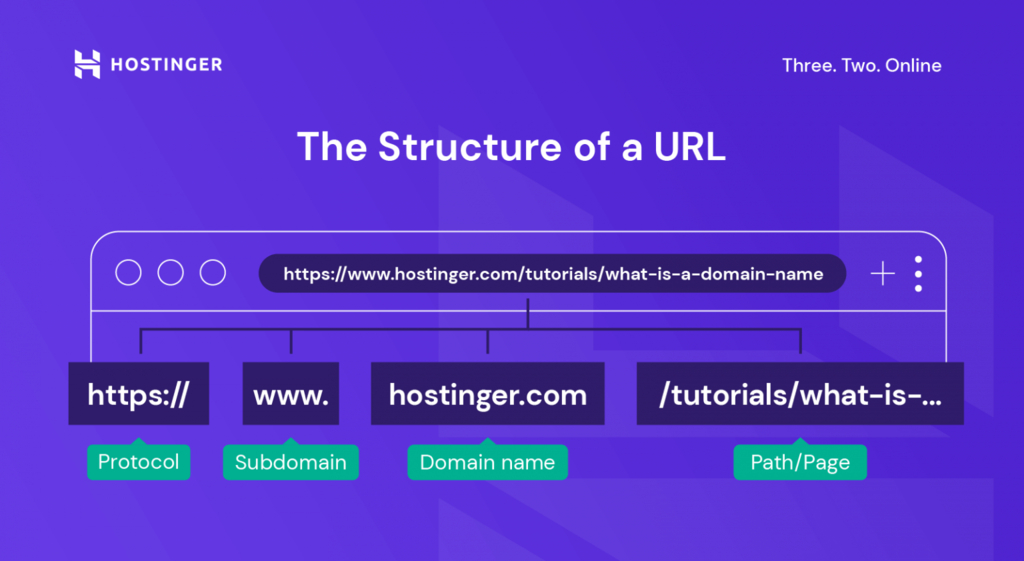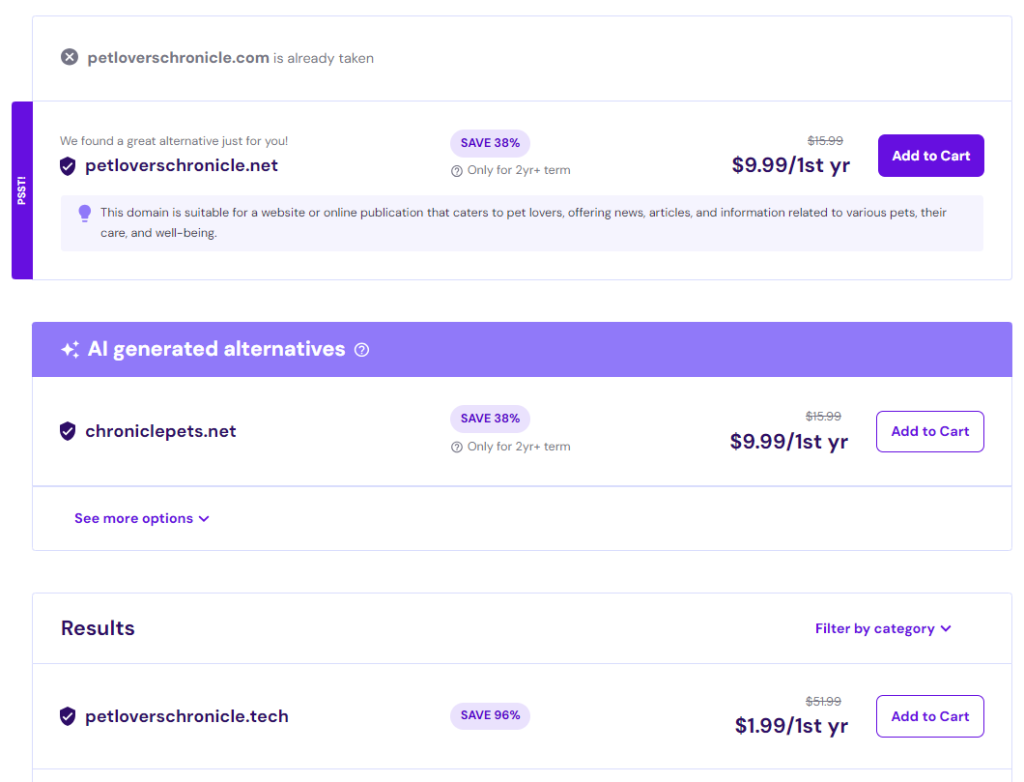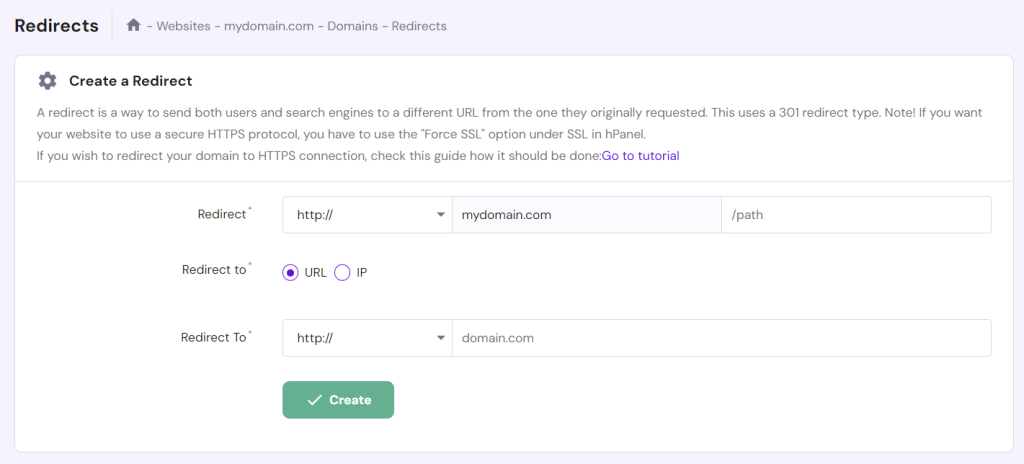What Is a TLD? All You Need to Know About Top-Level Domains
A top-level domain (TLD) or a domain extension is the final part of a web address after the domain name. Top-level domains help identify websites and their purpose, improving the user experience.
As various top-level domains affect user perception differently, it’s crucial to pair your domain name with the right extension.
This article will explore different types of top-level domains and their examples. We will also cover their impact on search rankings to help you choose the best domain extension for your website.
Download website launch checklist
What Is a Top-Level Domain?
A top-level domain (TLD) or a domain extension is the end part of a domain name. In hostinger.com, hostinger is the domain name, and .com is the TLD. While domain extensions come in various types, only three are available for public use ‒ generic, sponsored, and country code TLDs.
Domain Name Structure
A domain name is the web address visitors type into the browser to reach your website.

From left to right, the domain structure includes:
- Subdomain – located to the left of a second-level domain, it serves as an extension of the primary domain. A subdomain can also highlight a website’s specific section, such as blog.site.com. Not all domains feature subdomains.
- Second-level domain – often referred to as a domain name, it’s the most memorable part of the domain structure. Taking place before the final dot, it usually contains a brand name.
- Top-level domain – takes place after the last dot and usually consists of two to three letters, such as .com, .net, or .fr, It can represent specific elements of a website, like its purpose, owner, or geographical location.
With different types of TLDs, it’s easier to secure unique domains. Most domain checker tools usually offer similar names with different TLDs if your first choice is taken.
Hostinger, for example, has around 300 domain endings for various purposes. Our AI domain checker can pair domain variations with the appropriate TLDs based on your brand description to ensure they’re unique.

Let’s look at different types of top-level domains so you can make an informed decision when choosing a domain name for your website.
Different Types of Top-Level Domains
The Internet Corporation for Assigned Names and Numbers (ICANN) recognizes the following types of TLDs. However, only the first three are available for public registration.
Generic Top-Level Domain (gTLD)
Generic top-level domains are the most popular domain extensions for general use. Some of the most popular generic TLDs include:
- .com – originally created for commercial sites, it’s now the most widely used TLD.
- .org – often associated with nonprofit organizations or charities.
- .net – popular among tech-based companies and network providers.
- .biz – caters to commercial use.
As securing domains with old gTLDs is getting harder, new industry-specific gTLDs like .online and .shop are gaining popularity. Not all domain registrars offer the same generic TLD options, so it’s best to shop around before buying.
Keep in mind that certain gTLDs like .gov, .edu, or .bank require proof that you belong to the relevant community or sector.
Domain Name Checker
Instantly check domain name availability.
Sponsored Top-Level Domain (sTLD)
An sTLD is a domain extension restricted to a specific entity or owner. Private organizations sponsor sTLDs, so registering them requires formal authorization and must be done through specific registrars.
Due to their exclusivity, there’s only a limited number of sponsored top-level domains in the global domain name system (DNS). As of the time of writing this article, the Internet Assigned Numbers Authority (IANA) registry lists only 15 sTLDs, including:
- .gov – sponsored by the U.S. General Services Administration for U.S. government entities at the federal, state, and local levels.
- .edu – reserved by EDUCAUSE for accredited U.S. postsecondary educational institutions.
- .int – reserved for entities established by international treaties, governed by IANA.
- .mil – exclusively for the U.S. military, overseen by the Department of Defense.
Country Code Top-Level Domain (ccTLD)
A country code top-level domain identifies the country or territory of an internet address using a two-letter code based on the ISO 3166-1 alpha 2 standard.
IANA lists over 300 ccTLDs, surpassing the number of recognized countries as they include top-level domains for dependent territories.
A few examples of country code TLDs include:
- .us – United States
- co.uk – United Kingdom
- .de – Germany
- .fr – France
- .in ‒ India
- .br ‒ Brazil
In 2010, ICANN introduced internationalized ccTLDs (IDN ccTLDs) featuring non-Latin characters. These top-level domains support over 30 languages, including Arabic, Chinese, Cyrillic, and Hebrew.
Most country code top-level domains are available only to the corresponding countries’ residents. However, some are public and available to purchase anywhere, like .co (Colombia) and .tv (Tuvalu).
Country code TLDs can be highly beneficial for marketing purposes. Here’s how:
- Build local presence ‒ show that your business is local, establishing credibility among local customers and improving brand awareness globally.
- Geo-targeting ‒ tailor your content, offers, and marketing messages to specific audiences for higher engagement and conversion rates.
- Brand protection ‒ prevent competitors from misusing your brand name with a different TLD.
Infrastructure Top-Level Domain
The only infrastructure TLD is .arpa, which stands for Address and Routing Parameter Area. IANA reserves this top-level domain extension for the Internet Engineering Task Force (IETF) to manage network infrastructure tasks.
Therefore, only entities managing network infrastructure can use it.
Test Top-Level Domain (tTLD)
These extensions are only for local testing and documentation, not for installation in the global domain name system.
The four test top-level domains include:
- .test – reserved for testing different scenarios or software.
- .example – used as placeholders for documentation purposes only.
- .invalid – displays invalid domain names when needed.
- .localhost – used for testing within local networks.
The Impact of TLDs on SEO
While TLDs don’t affect a site’s search rankings directly, they can influence search engine optimization (SEO) in several indirect ways.
For example, using less common TLDs can lead to fewer inbound links and less traffic due to their lack of memorability. On the other hand, popular domain extensions are trusted by users, which can help your site gain more traction and build trust.
Country code TLDs can help you rank higher in local search results and communicate website localization to the right audience. For example, Hostinger builds its presence in India through hostinger.in website with localized content, prices, and promotions.
With new generic top-level domains, you can use industry keywords to improve outreach and marketing for a more effective and organic approach.
Or, if you’re already our customer, you can get the Domain Bundle deal and purchase multiple domains with matching domain names but differing extensions. That way, you’ll future-proof your branding by ensuring no one else will be able to use your domain name.
Did You Know?
Hostinger offers a one-year free domain registration, including .com, with annual Premium web hosting or higher-tier plans.
How to Change Your Website’s TLD
Changing your website address to a different TLD is possible through a domain redirect. This method redirects all traffic from the old domain name to the new one without losing your SEO authority.
WordPress users can use a redirect plugin to ease the setup process. Our tutorial will walk you through creating 301 permanent redirects in WordPress.
Domain Name Checker
Instantly check domain name availability.
Alternatively, redirect the domain from your hosting or domain registrar account. After buying the new domain, Hostinger users can follow these steps to set up a URL redirect from hPanel:
- Log in to your hosting account and head to the Websites page. Click on the Manage button next to the website you want to redirect.

- Open Domains → Redirects on the left sidebar.
- Fill in the required information:
- Redirect – choose a domain you want to redirect.
- /path – if needed, specify a custom path to redirect.
- Redirect to URL or IP – pick your desired type of destination.
- Redirect to – enter the destination to where the domain will redirect.

- Hit Create once you’re done.
Important! Back up your website before migrating to a new domain name to avoid data loss.
Conclusion
A top-level domain (TLD) is a suffix located after the final dot of a domain name. TLDs help users identify websites’ purpose, owner, and location without viewing the content, making them a valuable tool for marketing and SEO.
For example, blogs and business websites often use gTLDs like .com to imply their commercial purposes or niche statuses. ccTLDs like .co.uk, .in, or .de, make your brand more accessible to regional audiences, whereas sTLDs like .gov tell visitors who runs the website.
We hope this article helped you understand the importance of TLD and its impact on your website. If you have any questions, check out our FAQ section or leave a comment below.
What Is a Top-Level Domain FAQ
This section will answer some of the most common questions about top-level domain extensions.
Why Is a TLD Important?
A TLD helps define a website’s purpose, improves brand recognition, and builds user trust. It also affects SEO indirectly and facilitates geographic targeting, making it crucial for establishing a successful online presence, credibility, and digital marketing.
Who Manages Top-Level Domains?
The Internet Corporation for Assigned Names and Numbers (ICANN) is responsible for managing top-level domains across the internet. It delegates the responsibility for specific TLDs to designated registries, such as Verisign for .com and the Public Interest Registry (PIR) for .org.
Can I Get Any TLD I Want?
Anyone can register domains with generic extensions. However, access to sponsored and country code top-level domains might be restricted to certain parties who can provide proof of residency or membership in a specific community. Additionally, organizations with specific needs can apply to create and manage new generic TLDs with ICANN’s approval.
What Are the Most Popular Top-Level Domains?
Statista reports that 46% of global websites use a .com domain extension, making it the most popular TLD today. Other widely used TLDs include .org, .ru, .de, and .net, with .org accounting for 4.5% of websites.


Comments
May 30 2022
Is this possible to transfer and host the ".com.pk" domain on hostinger. I'm trying to do so but its showing invalid tld? Need help in that plz
May 31 2022
Hi there, yes, you can host a .com.pk domain on Hostinger - all you need to do is add it to your hosting plan. However, at the moment we do not sell .com.pk domain names, so you would need to get it with a provider that does sell it and then point it to your Hostinger plan. You can purchase your domain with a provider like PK domains and then to point it to Hostinger, follow this guide on how to point your domain name. If you're stuck anywhere, feel free to reach out to our Customer Success team!
June 01 2023
Hi Why is .no TLD is not supported by Hostinger. I live in Norway and I wanted to migrate to Hostinger.
June 02 2023
Hello, thank you for your feedback, I've forwarded it to our domains team. We will do our best to include .no TLD in the near future. However, I can also suggest trying out other TLDs too, we just recently added around 40 new TLDs. Check them out here.
November 14 2023
Hi there. Can I transfer the domain "fp.lu" to Hostinger? I cannot test it on your Website here as I get the message "Domain name should consist of at least 3 characters". It is not a typo, the domain name consist of only two letters! The ccTLD is "LU". A few years ago this was made possible by our local registrar in Luxembourg "https://my.lu/en". Thank you for getting back to me.
November 22 2023
Hi there! Currently, Hostinger does not support the transfer of .LU domains. However, you can still use this domain with Hostinger by pointing it to our servers. If you have any other questions or need further assistance, feel free to ask our Customer Success Team ?